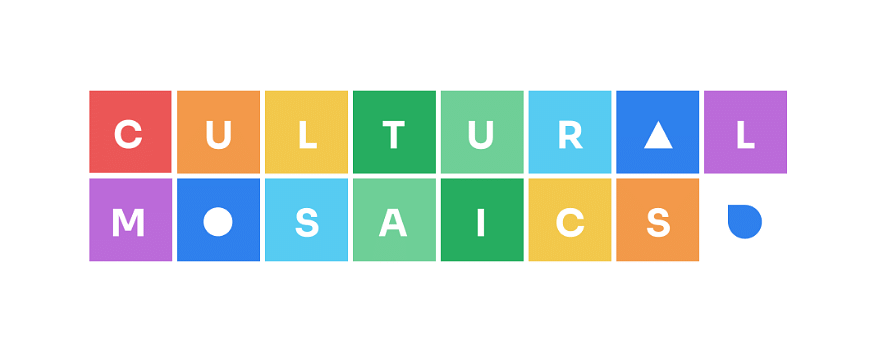In our day and age there are so many ways children can grow up navigating different cultures. Chances are you’ve probably heard of the term Third Culture Kids, but have you heard of the more inclusive term Cross-Cultural Kids?
Let’s dive in! Third Culture Kids (TCK) and Cross-Cultural Kids may seem similar at first glance, but they're distinct concepts with nuanced differences. TCKs refer to children who relocate to a new country due to their parents' career choices, exposing them to two or more cultures. On the other hand, the Cross-Cultural Kids model encompass a broader spectrum, incorporating 12 distinct scenarios in which children navigate diverse cultural experiences. For instance, Cross-Cultural Kids may include individuals with parents from different cultural backgrounds, members of minority groups, or children adopted from foreign countries and raised in different cultures altogether, to name a few.
Cross-Cultural Kids emerges as a much more inclusive term, recognizing the myriad of ways in which children engage with various cultures during their upbringing. In fact, TCK is just one of the 12 categories within the Cross-Cultural Kid model, highlighting the comprehensive nature of this model. The wonderful thing about the Cross-Cultural Kid model is you often tend to belong to more than one category and that is the intersection that makes you uniquely you.

Introducing Cultural Mosaics
In September of 2023 Wiebke Homborg, from Chameleon Coaching, and myself, Beatriz Nour from the inbetweenish, published our first collaboration Cultural Mosaics where we carefully break down each of the 12 Cross-Cultural Kid categories one by one, simplifying them into basic shapes. (Oh and by the way, I designed all of these pictograms myself!)
Wiebke is an intercultural trainer and coach who is passionate about supporting and empowering individuals on their journeys across cultures. We both relate to the Cross-Cultural Kid model on a personal level; Wiebke is a Third Culture Kid and I fit into several of the 12 Cross-Cultural Kid categories.
Over the next couple of Articles I will outline each Cross-Cultural Kid category using the pictograms I've illustrated for the Cultural Mosaics collaboration, explain how each category is different, and also highlight how certain categories can often be misrepresented or wrongfully used interchangeably. Of course, there are similarities between all of these categories, but there are also major differences ranging from expected repatriation, to varying socio-economic implications, to different cycles of mobility and more.
Watch our reel introducing Cultural Mosaics!
A Little Bit of History
The term "Third Culture Kids" was first coined in the 1950s by sociologists and anthropologists Ruth and John Useem. Their inspiration came from personal experience when they relocated from their home country, the USA, to India. Witnessing the experiences of their own American children, as well as those of other American families living abroad, the Useems observed how the children interacted with and assimilated into their new lives overseas.
Ruth van Reken (yes, another Ruth) then built upon the research developed on Third Culture Kids and expanded her scope to be more inclusive of different kinds of experiences/circumstances that may immerse children across different cultures. So, in 1987 the Cross-Cultural Kids model was designed, initially outlining only 7 Cross-Cultural Kid categories. Over the years, this has expanded as more diverse cross-cultural experiences were observed and studied.
The Importance of Developmental Years
By definition, a Cross-Cultural Kid is “a person who has lived in—or meaningfully interacted with—two or more cultural environments for a significant period of time during developmental years”. When looking at Cross-Cultural Kids in general, there is a big emphasis on developmental years. That is because that is when we are the most malleable and we absorb the world around us differently, and less consciously then we do as adults. Developmental years are broken down into 3 major stages of child development: from early childhood (birth to age 5), to middle childhood (ages 6 to 12), and then adolescence (ages 13 to 18).
Side Note: The term Adult Third Culture Kid (ATCK) is often used to describe children who grew up as Third Culture Kids but are now adults. At the moment, no such equivalent ‘adult’ term exists to describe Cross-Cultural Kids who are now adults.

Coming Up Next: Each Cross-Cultural Kid Category Explained
Cultural Mosaics Part I — Understanding Cross-Cultural Kids and how they differ from Third Culture Kids
Cultural Mosaics Part II — Children of Refugees, Children of Immigrants, Children of Marginalized Minorities, + Children of Privileged Minorities
Cultural Mosaics Part III — Third Culture Kids, Domestic Third Culture Kids, Educational Cross-Cultural Kids, + Children of Borderlanders
Cultural Mosaics Part IV — Bicultural Children, Multicultural Children, Children of Mixed Heritage, + Internationally Adopted Children
For more information on Third Culture Kids vs Cross-Cultural Kids you can listen 🎧 to this episode of the inbetweenish pod where I give an overview of the nuances, similarities, and differences between both.

